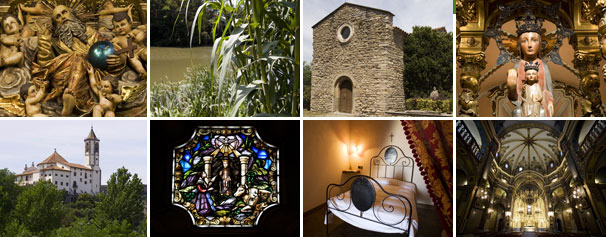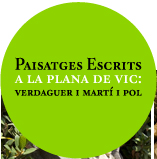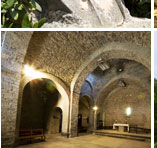Verdaguer. Les Masies de Voltregà
There are two key places within the Les Masies de Voltregà city limits
where we can feel close to Verdaguer and that help us understand his life.
The church at Sant Esteve de Vinyoles, located high in the old part of Vinyoles,
recalls the first and only time Verdaguer acted as parish priest. Visitors can
also admire the laurel tree – the tree of poets and immortality – planted
by Verdaguer in the rectory gardens, which has become a pilgrimage spot for admirers
of the poet. It was here that he wrote a large part of
L’Atlàntida (Atlantis)
and
Idil·lis i Cants Místics (Idylls
and Mystic Songs).
The Sanctuary of La Gleva, one of the most interesting buildings of the Catalan
Baroque, recalls one of the most tragic stages in the poet’s life, when
persecuted and slandered, he was shut away in the Sanctuary under the pretext
of the need to recover his health. Verdaguer was to spend two years there until,
defying Church authorities, he fled La Gleva and went to Barcelona, where he
was suspended a
divinis and wrote
En defensa pròpia (In
Self-Defence),
in which he put forward his version of the facts and explained the injustices
he had suffered.
Visitors can see the poet’s bedroom and, from the balcony, take in the
beautiful view over the River Ter, the plain and the Collsacabra Mountains from
the Guilleries and Montseny massifs to the horizon. Here, we can imagine Verdaguer’s
solitude whilst looking out over the landscape and writing
Roser
de tot l’any (The Rose Almanac) and
La fugida
a Egipte (The Flight to
Egypt) from the
Jesús Infant (The Child Jesus) trilogy.





